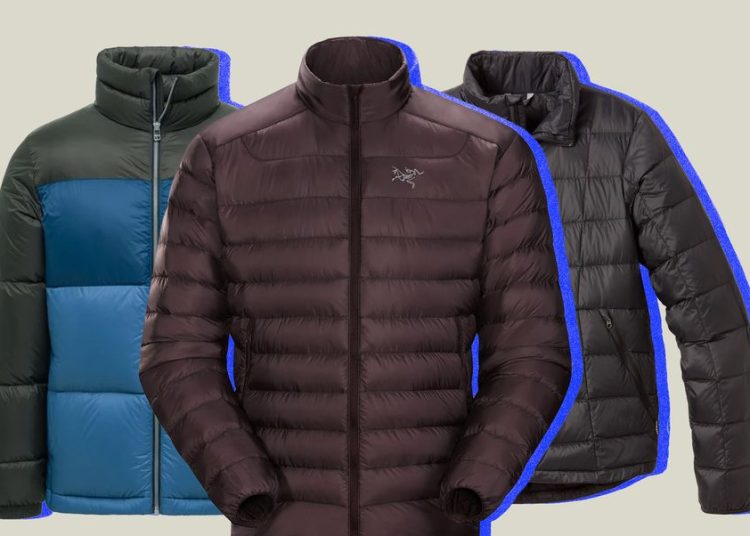Ever wanted a cozy jacket with a barely-there weight? Sometimes it gets daunting to select a jacket that offers all your needs from warmth and lightweight to comfort and a friendly price tag. With freezing hints from the winter months, you definitely have to make that decision to get yourself a warm jacket that typically provides warmth from -5 to -40°C. This guide will be your aid in choosing and buying the most suitable jackets for you.
Table of Contents
What Determines the Type of Warm Jacket You Should Buy?
To thrive and survive the frigid winter months, you would need extra layers of warmth without feeling the bulk to stay comfortable. The amount and type of insulation provided by a jacket determine the extent of warmth it would provide. That is, the ounces or grams of insulation, fill power, inner lining material, and the outer fabric of the jacket.
The purpose or activity you intend to engage in with the jacket is another important factor in choosing your jacket. For instance, some jackets are suitable for summer while others are best worn in winter. Also, a winter sports jacket differs from the jacket you would use for adventurous activities like hiking.
Summarily, before choosing a warm jacket you must consider the type of insulation (down or synthetic), the inner lining and outer fabric of the jacket, the activity you need the jacket for, and other additional features like comfort, style, and packability. Now, let’s get into details on some of the warmest jackets you should choose for freezing weather conditions.
Types of Warm Jackets Best for Winter
Materials like wool, faux fur, hemp, cashmere, nylon, corduroy, mohair, and flannel are great for the cold weather but when it comes to snow, you would need jackets that are waterproof or near equivalent. These are fleece jackets, parka jackets, puffer jackets, hardshell jackets, and any other waterproof jacket.
1. Fleece Jackets
Fleece jackets are the best when warmth is the primary factor. Fleece is a soft insulating fabric, breathable and warm to the touch. It is also lightweight when compared to wool and doesn’t feel like you’re stuffed in a bag. Although it retains moisture, it also dries out quickly.
This jacket can be worn as the mid-layer under your clothing but not as outerwear when it’s too cold or windy. This is a durable jacket for mountain adventures since it retains body heat.
2. Winter Waterproof Hiking Parka
To protect yourself at very low-temperature regions between -5 and -25°C, this is the jacket you should wear. Parkas are designed for activities such as snow hiking and traveling between variable weathers. The waterproof nature of the jacket makes it ideal for light rain and the thickness may reach between 2000 – 5000mm.
Parkas are warm enough but are usually heavy to wear. Recent designs are made with Gore-Tex and polyfill which are lighter than the former. Some parkas and winter jackets come with synthetic welded baffles which help to keep the down in place, thus eliminating cold spots.
Other features in parkas that result in a warmer jacket are Omnitech radiant lining, silver insulation in shoulder panels, handwarmer pockets and pocket flaps, storm flaps, adjustable hood with tightening drawcord, underarm opening with zipper for ventilation, and cuffs.
3. Puffy Down Jackets
Puffy jackets provide insulation by trapping air. The trapped air is warmed by the body and further gets radiated to the skin through minute air spaces in the puffies. Puffy jackets are stylish to wear and more puffiness means more warmth but I bet you wouldn’t want to look like Michelin Man to get all cozy in the coldest settings.
Down is a good insulator because it creates numerous air-trapping pockets that retain heat. It is light, breathable, and easy to compress, hence, a great option for when you want to save space. The fill number of a down jacket refers to the fluffiness of the down. Higher fill power means more warmth as more air gets trapped within. This also translates to less bulkiness.
4. Synthetic Puffy Jackets
These are the least costly and easily available jacket options. It is made of polyester which dries out quickly and is compressible. Generally, jackets that offer synthetic insulation are heavier than down jackets. Even so, lightweight synthetic puffy jackets are thinner than the very puffy down jackets but they are not the warmest. The gold standard for synthetic insulation is 200g and that is for the warmest.
Wrapping Up
The price point of most quality jackets is typically high given the components used for producing the insulating material. However, at SunsetFashionLA, we guarantee that you can get premium-quality warm jackets at budget-friendly prices.










![Is Tokyo Ghoul on Netflix? [How to Watch Online]](https://avctv.com/wp-content/uploads/2022/08/AAAABct1DaUzhEt4JeJFeDrmaE_4CGAu39fBN6poMx10hAlWlMRjkkAw84hjmuujWTy2wFC7_Pjnujec-_PqT1GCnnMFMJ15S04baJn1b0WvvbG6hrSNb31_GS4--120x86.jpg)





